Thermal
Using the most accurate thermal cameras available for agriculture, Ceres Imaging measures the heat emitted from trees, vines, or areas of a row crop canopy. Unlike similar products derived from satellite data, our scientific-grade imagery reveals plant health issues before they’re visible to field scouts—and before damage impacts the grower’s bottom line.

Common uses
- Detecting and controlling pre-symptomatic pest and disease issues
- Pinpointing common issues in both drip and pivot irrigation systems—including leaks, clogged emitters, pressure issues
- Evaluating soil fertility and salinity
- Optimizing irrigation scheduling and system design for terrain and soil conditions
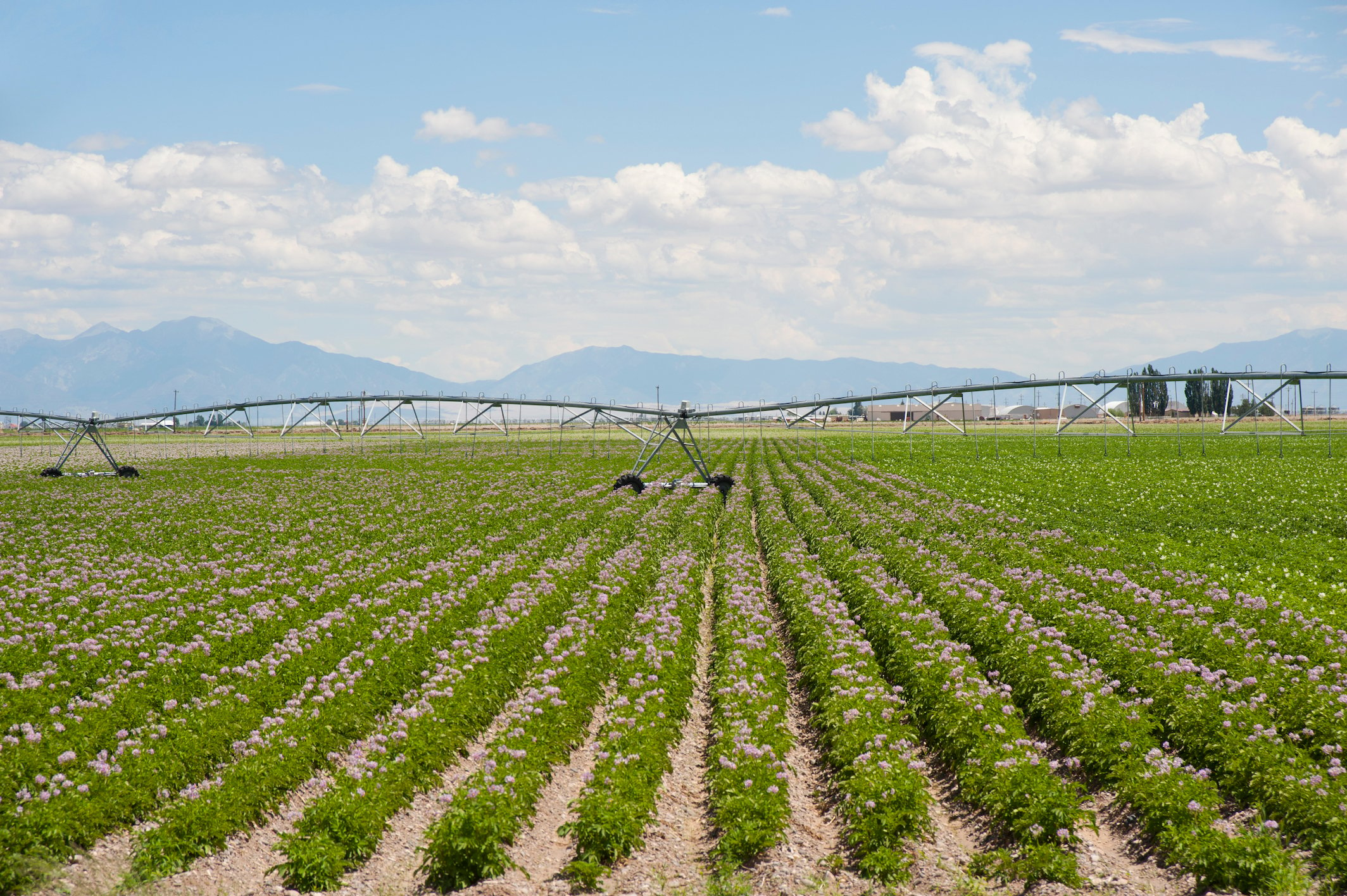
How it works
Thermal imagery captured from the air makes visible the heat emitted from objects on the ground, revealing temperature differences that correspond to crop stress. Ceres Imaging uses scientific-grade thermal cameras capable of detecting temperature differences as small as 0.1 degree Celsius between plants—the most precise imagery available for agriculture.
Careful calibration and image correction ensures that irrelevant objects—for example, pivot equipment—don’t skew the data. In the resulting imagery, cooler areas appear purple, while warmer areas appear yellow.
Because water cools vegetation, thermal imagery is useful for detecting leaks, clogs, and other irrigation issues. By revealing subtle changes in leaf surface temperature, thermal imagery also helps growers detect pre-symptomatic disease and pest pressures—and respond with more timely and more targeted interventions.
From imagery
to action
High-resolution multispectral imagery is only the beginning. Our analytics tools help you interpret your data—translating what you can see in your imagery into what you can do about it.
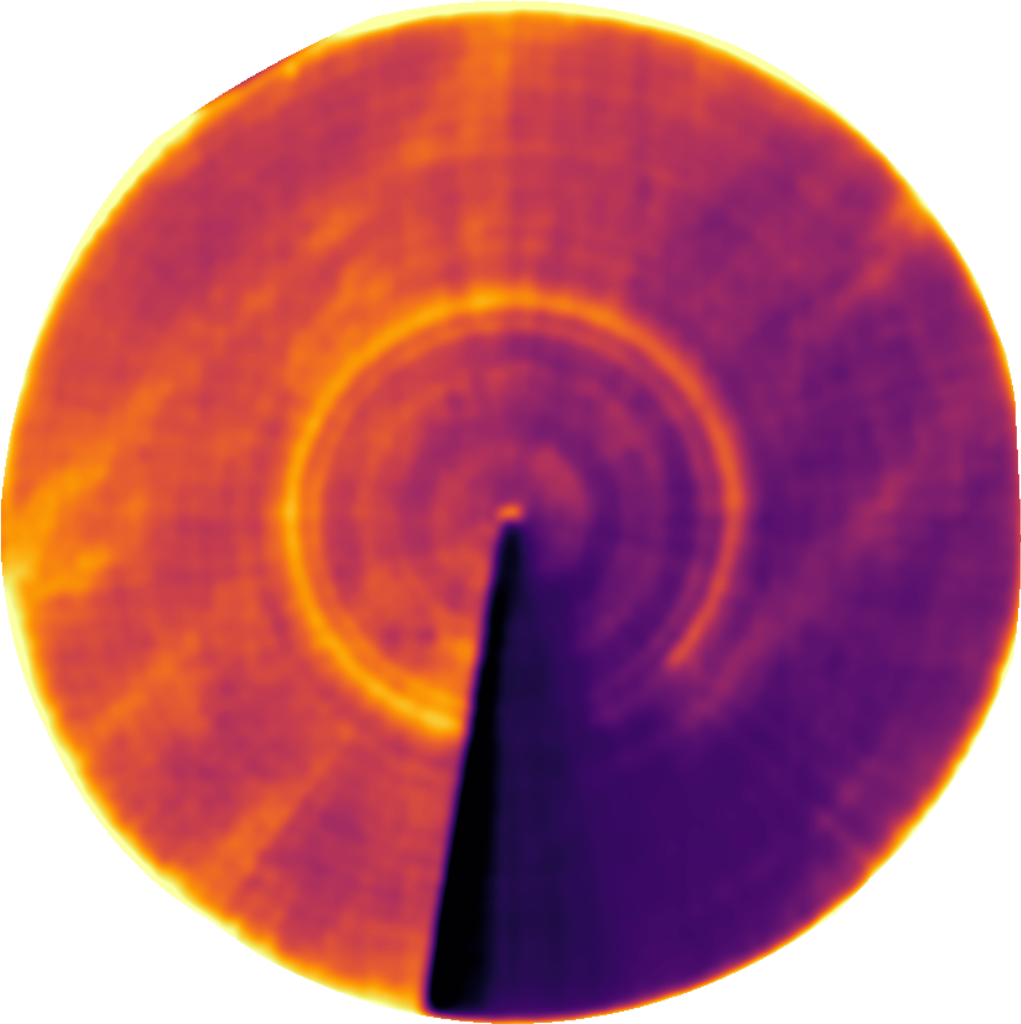
Clogs
The distinct inner orange ring shows where a clogged nozzle has resulted in underwatering.
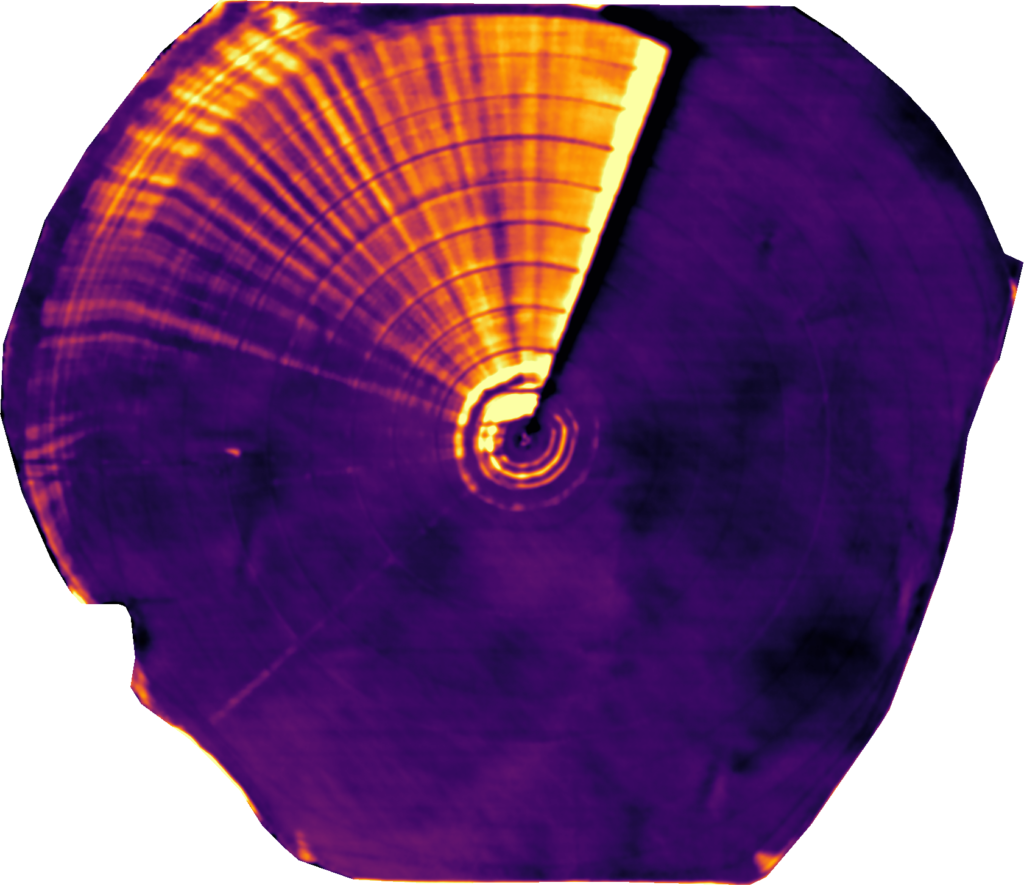
Pressure issue
Thermal imagery can reveal irrigation pressure failures easily missed in scouting.
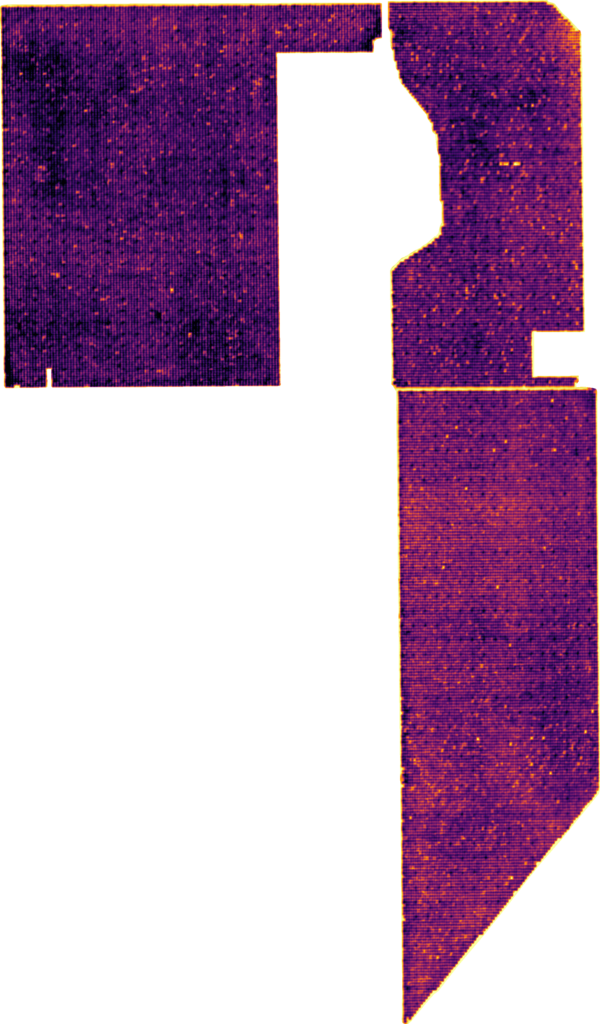
Plant stress
In this drip-irrigated field, tree stress was found to increase with distance from the filter station.
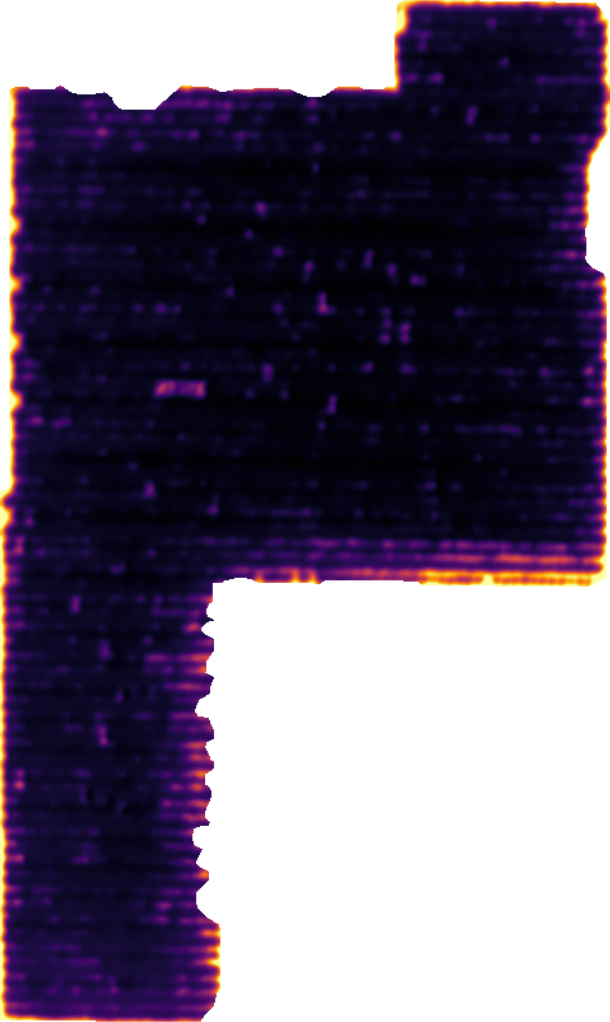
System design
Thermal imagery revealed that trees in an adjacent property were contributing to stress on edges of the field.
Ensuring accuracy
Ceres Imaging’s emphasis on quality begins even before we fly your fields.
Image capture
We capture imagery during peak daylight hours and under weather conditions that minimize distortion from shadows and cloud cover. Our highly sensitive, custom-built cameras detect minute changes in the multispectral range—allowing us to detect crop stress earlier than our competitors.
Processing and analysis
Imagery is geo-referenced and meticulously “masked” to ensure that only relevant information is evaluated. By making use of crop-specific data models and isolating the canopy from ground cover and other background noise, we prevent skewing of the data and enable a more accurate assessment of plant health.
Quality control
Imagery is assessed in-house by Ceres Imaging’s remote sensing experts, passing through multiple checkpoints before delivery in the Ceres Imaging app within 48 hours of the flight. Growers can access their data on a mobile device, tablet, or desktop computer.
More imagery and analytics
The difference between Ceres AI and other technologies I've used is the help I get from their expert team.
With Ceres AI we can take a more targeted approach to applying fertilizer and nutrients.
These flights can cover way more ground and provide more insight than a dozen soil moisture probes — and it's cheaper to implement.
The average Ceres AI conductance measurement from its imagery over the season has provided the best correlation with applied water.
